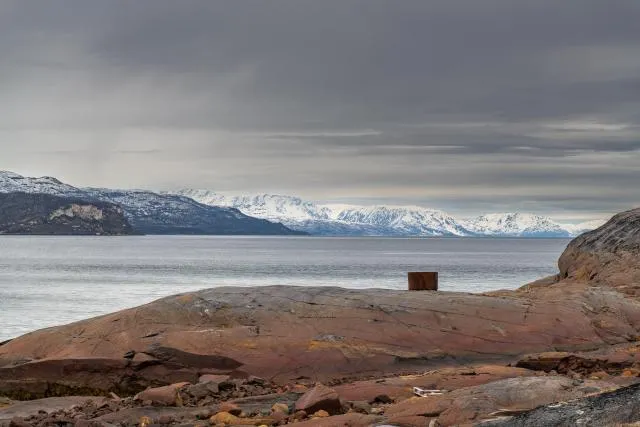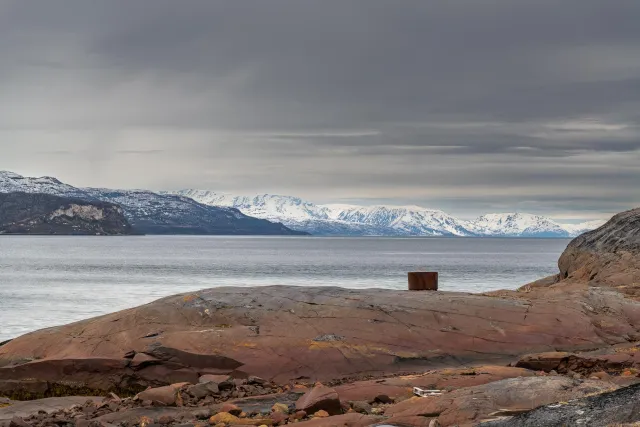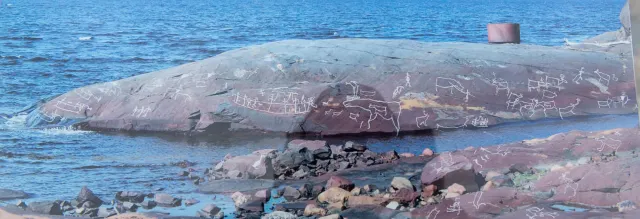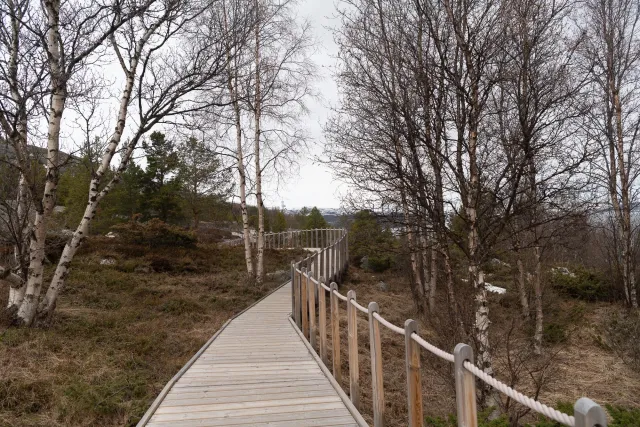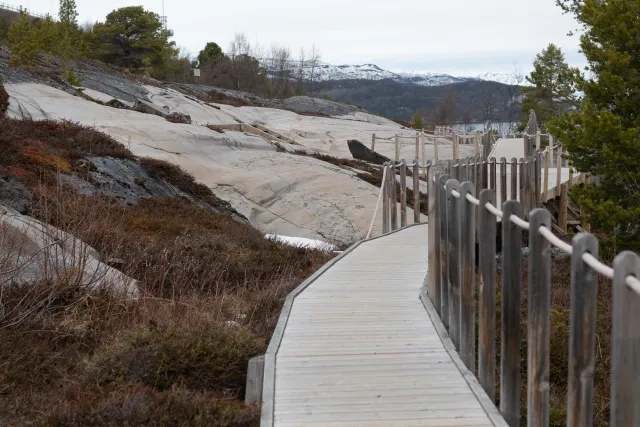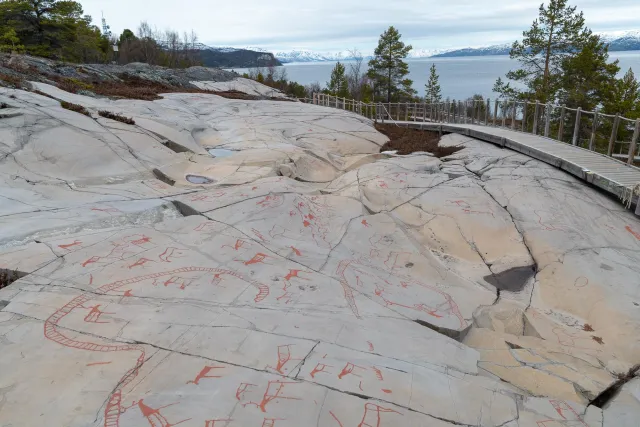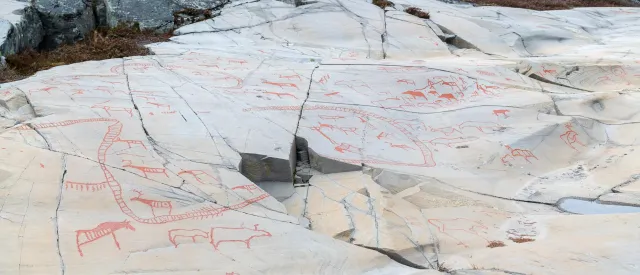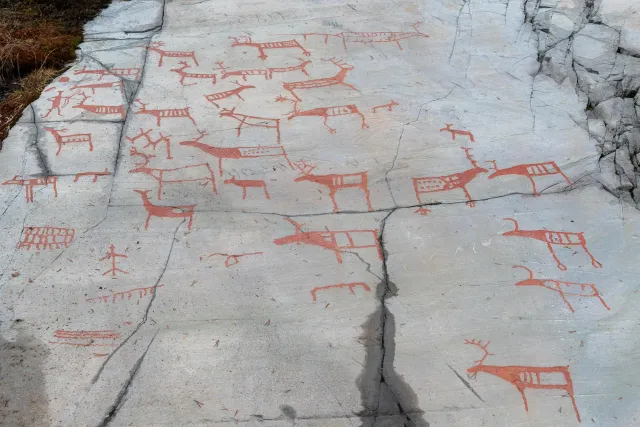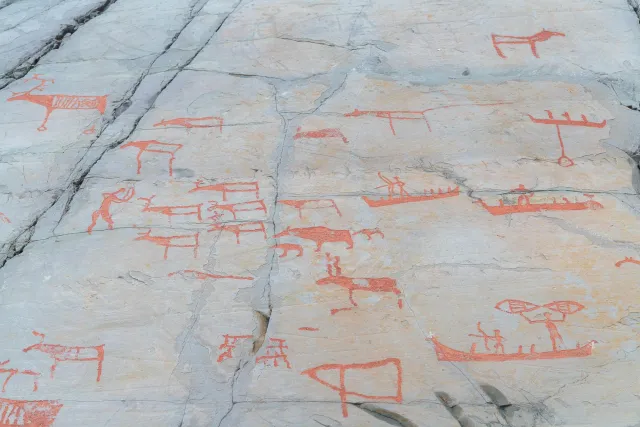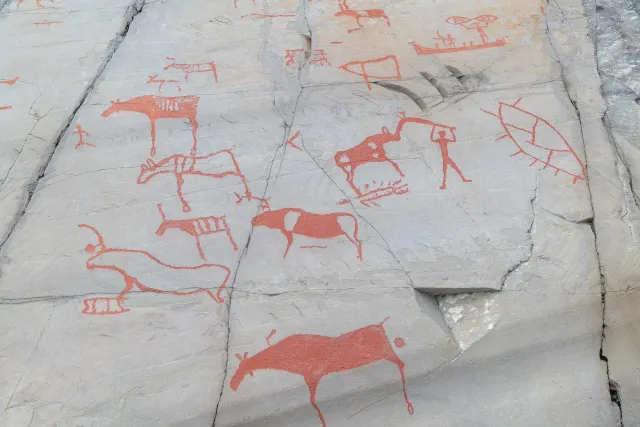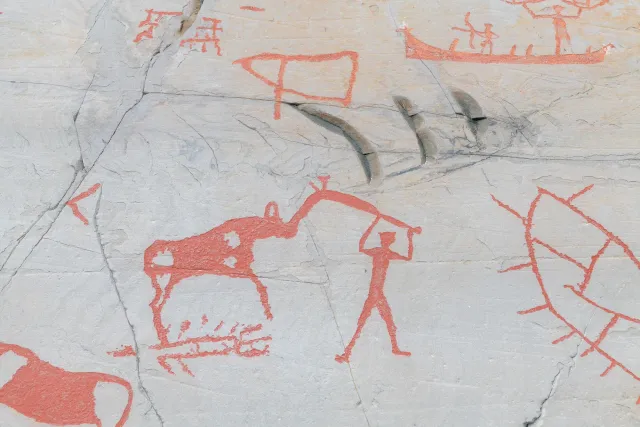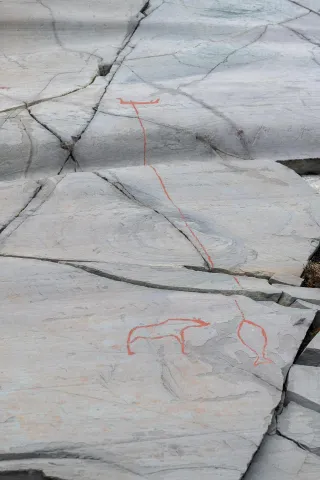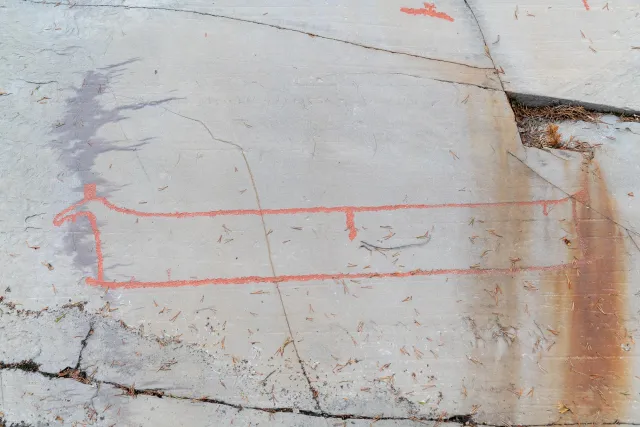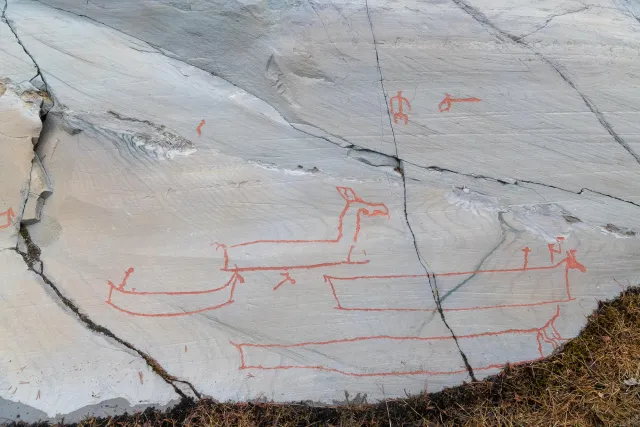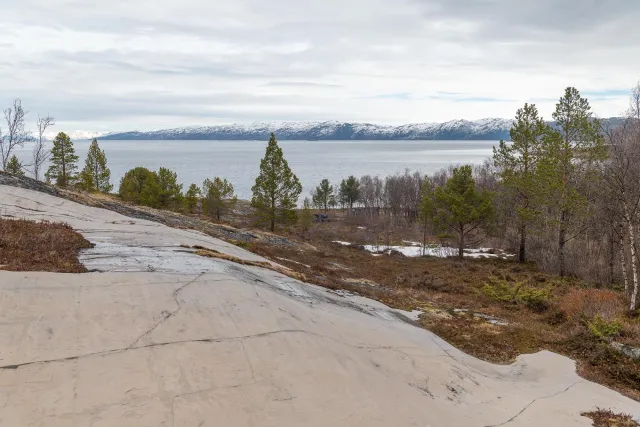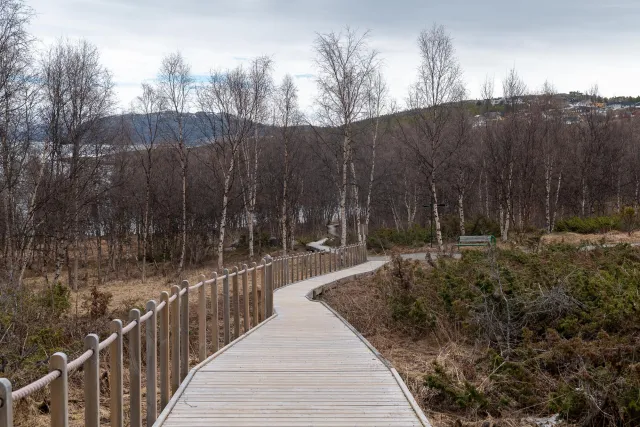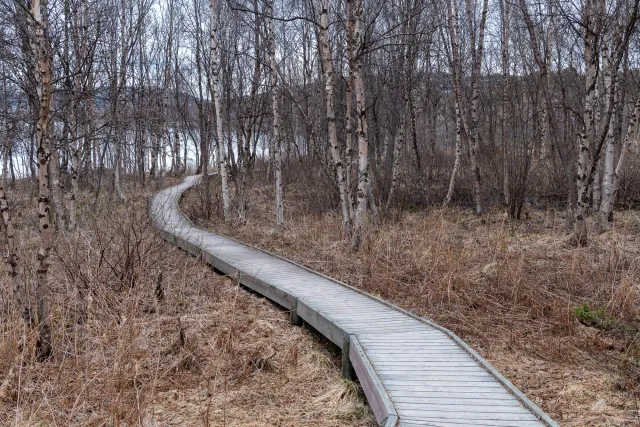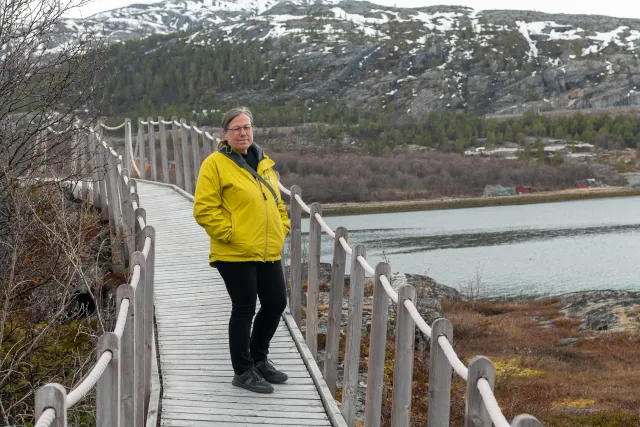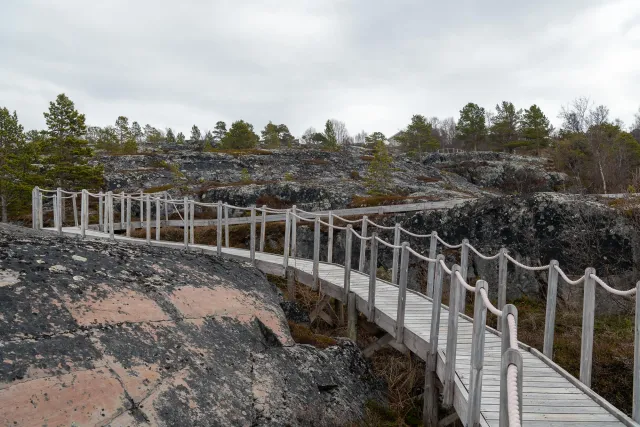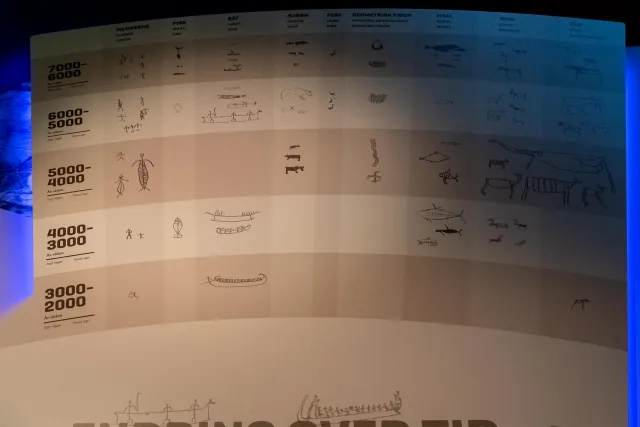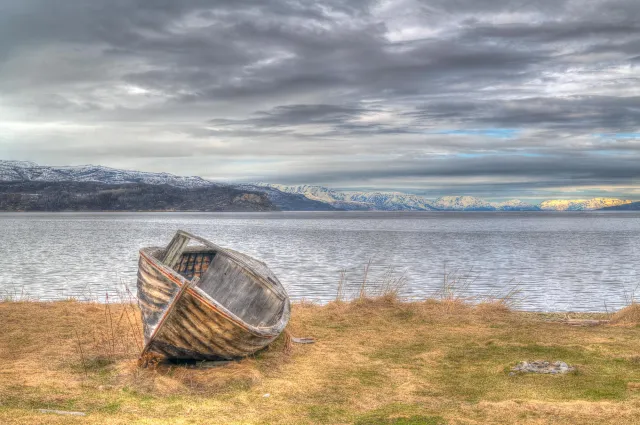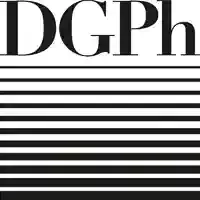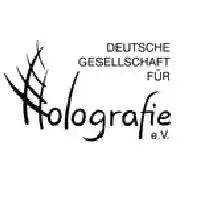In the Hjemmeluft area on the southern shore of the Altafjord in northern Norway, just west of the town of Alta, Neolithic and Bronze Age petroglyphs were found in the autumn of 1972, ranging in age from 2000 to 6500 years.
Petroglyphs (from Greek πέτρος petros "stone" and γλύφειν glýphein "to carve") are representations worked into stone, which often show hunting and religious scenes from prehistoric times. Unlike rock art, a petroglyph is engraved, scraped, or pecked, and sunk into the ground.
In the Alta Museum, these rock carvings can be viewed along wooden paths that are about 3 km long. The museum has been on the UNESCO World Heritage List since December 1985. The number of petroglyphs in the Alta area is estimated at around 4000, which can be seen in four different areas. The Alta Museum area is the largest of the four areas.
On a tour of Hjemmeluft you also travel through time, because not only the themes presented change from stone to stone but also the type of representation. For example, in the oldest petroglyphs, boats are represented very simply as bodies, while more recent rock carvings show decorated ships manned by crews.
Archaeologists have painted some of the rock carvings red so that the individual images can be seen clearly. With the stones on the shore, this could not be realized due to different water levels, but the first photos of this article show what you can easily overlook when looking at the stone formations. In the museum you can see one of the rock formations on the coast in the fjord "drawn".
